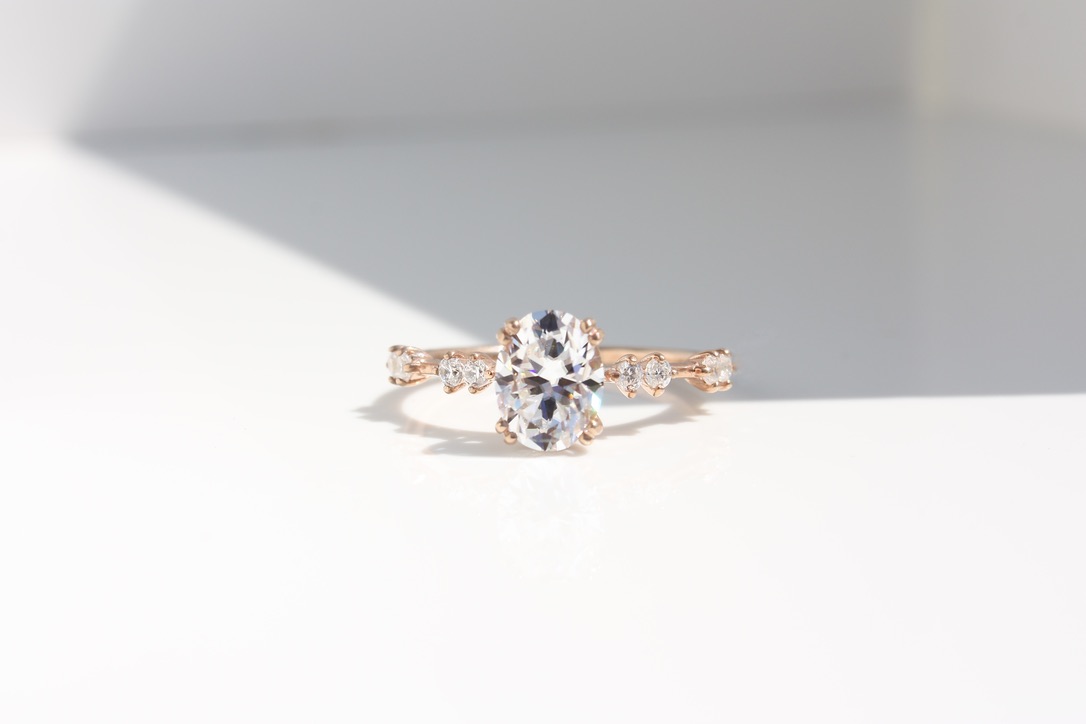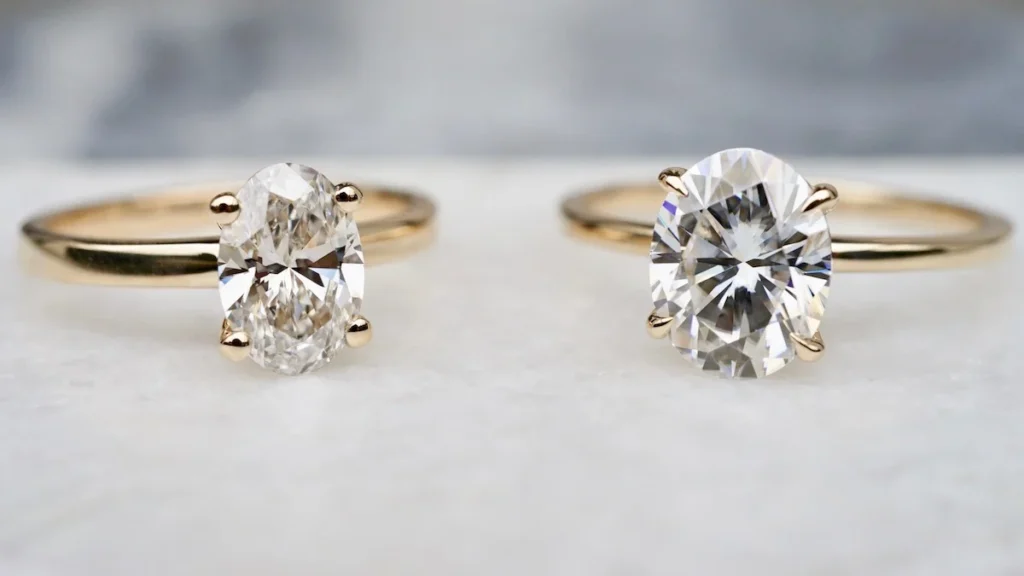

Moissanite, in its natural form, remains very rare. Discovered in 1893 by French chemist Henri Moissan while examining rock samples from a meteor crater, he mistakenly identified the crystals as diamonds, only to be correctly identified by Moissan as silicon carbide in 1904. The mineral form of silicon carbide was named in honour of Moissan later on in his life. Natural Moissanite is found in tiny crystals, making it unsuitable for use in jewellery.

Synthetic Moissanite was introduced to the jewellery market as a diamond alternative in 1998 after Charles & Colvard received patents to create and market laboratory grown silicon carbide gemstones. With refractive indices of 2.648 and 2.691, a dispersion of 0.104, a hardness of 9¼ on the Mohs scale, and a specific gravity of 3.22, synthetic moissanite is much closer to diamond in overall appearance and heft than any previous diamond imitation.
Moissanite can easily be differentiated from diamonds by use of a moissanite tester, a device that measures electrical conductivity or a loupe for a close visual examination.

Article credit: International Gem Society
